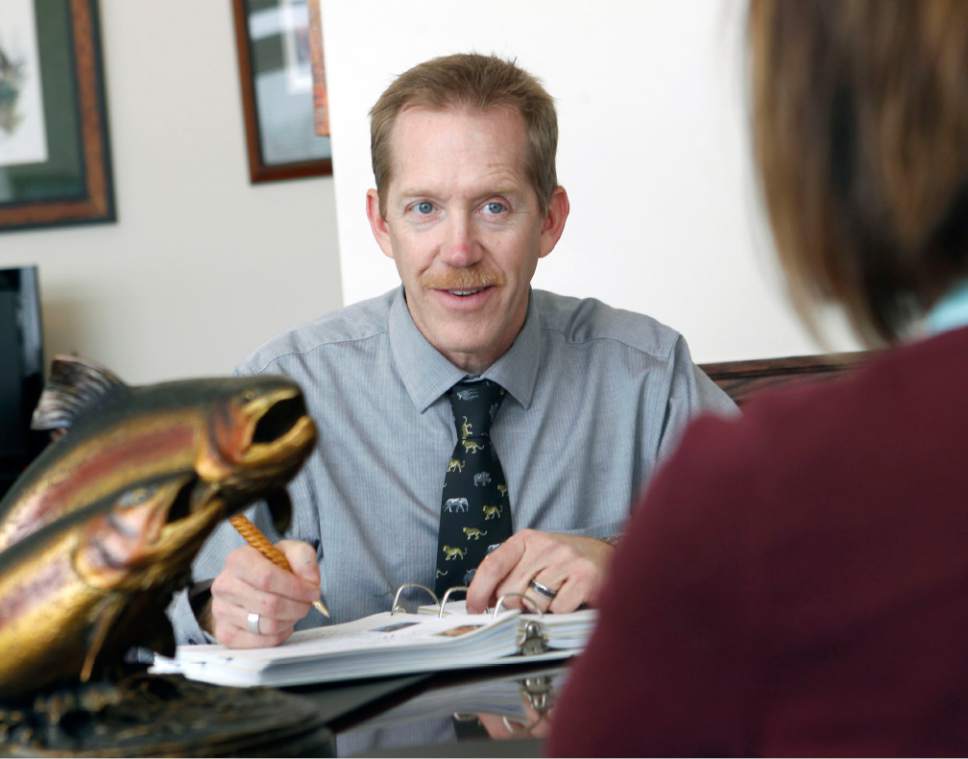This is an archived article that was published on sltrib.com in 2017, and information in the article may be outdated. It is provided only for personal research purposes and may not be reprinted.
The U.S. Interior Department has named Utah's top wildlife official as deputy director of the Fish and Wildlife Service, helping fill a leadership vacuum that has persisted for more than four months.
For the past 25 years, Greg Sheehan has worked for the Utah Division of Wildlife Resources, rising through the agency to head it in late 2012 after a decade serving as chief of administrative services.
"We are grateful to have Greg Sheehan join our team and help lead USFWS as we advance a pro-conservation and more collaborative agenda at the department," Interior Secretary Ryan Zinke said in a statement. "His experience and proven record in wildlife service as well as his organizational management skills will be an invaluable asset to the service and the department."
Sheehan begins June 19 and will serve as the agency's acting director, taking over for Dan Ashe, who left as director when President Barack Obama departed office. He is to report to Zinke's assistant secretary for fish, wildlife and parks, a position that has yet to be filled.
Sheehan will be jumping from a state agency of 550 employees with a $72 million budget to the head of a federal bureaucracy based in Arlington, Va. USFWS employs 9,000 people working out of 700 field offices and eight regional offices, with a budget of more than $1.5 billion.
Gov. Gary Herbert issued a statement Monday calling Sheehan "a tremendous asset to the state of Utah for more than 25 years" and saying that his leadership on wildlife management, habitat restoration and conservation had left DWR "significantly stronger."
In an interview, Sheehan said he looks forward to promoting the nation's fish and wildlife through partnerships with states, local governments and sports enthusiasts' communities. Collaborations are a hallmark of his four years at the helm of DWR.
"I am nervous as you would be with any new job. This is a big one at a national level," Sheehan said. "Am I ready to leave our agency and Utah behind? It's a good time to do that. Things are going well here."
Sheehan, 54, and his wife live in Layton and their two sons are grown. The oldest lives in Washington, D.C., where he recently completed graduate studies at Georgetown University.
"It has been an honor to serve as Utah's wildlife director and to work with such dedicated, hardworking professionals," Sheehan said. "We've made great strides in wildlife research and management that will have far-reaching benefits for many species and the people who care about them."
At this point, more than four months into Donald Trump's tenure as president, Sheehan is the highest-ranking member from Utah to join the new administration, although others have been mentioned as potential nominees, such as former Gov. Jon Huntsman for ambassador to Russia and state Rep. Mike Noel, R-Kanab, to head a sister interior agency, the Bureau of Land Management.
Sheehan recognized the federal agency he is about to help head is struggling with funding and a maintenance backlog in the refuge system, and he hopes to help resolve some of these shortfalls.
But whatever Sheehan does at USFWS, he could be doing it with less funding than Ashe. Trump proposes a $1.3 billion budget, a decrease of about 14 percent. Sheehan said he didn't know enough about the budget proposal to comment on it.
Interior officials stressed that improved efficiencies across the department will ensure the cuts don't undermine agency missions.
"This budget request prioritizes deferred maintenance funding for national wildlife refuges and fish hatcheries, active habitat management across millions of acres of public lands, and core wildlife-dependent recreational opportunities," Principal Deputy Assistant Secretary for Fish and Wildlife and Parks Virginia Johnson said in a statement.
Sheehan's boss Mike Styler, executive director of the Utah Department of Natural Resources, praised his commitment to conservation and "exemplary leadership on wildlife issues" while at DWR, where Sheehan put his financial expertise to use running the agency like a business catering to the anglers, hunters and wildlife watchers of Utah.
"Greg is leaving Utah's wildlife in outstanding shape — even better than when he started," Styler said. "He is a trusted public servant and has been a lifelong advocate for wildlife conservation. He has resolved complex wildlife issues by helping diverse interests find common ground. He is a true leader and his work ethic and dedication to wildlife are an example for his peers nationwide."
Under Sheehan's watch, according to DNR, Utah's mule deer numbers grew by 100,000, 1.3 million acres of wildlife habitat was improved under the Watershed Restoration Initiative, the Utah Cutthroat Slam was launched to promote conservation of the state's native trout species, and the greater sage grouse was kept off the endangered and threaten species list.
Deputy DWR Director Mike Fowlks will serve as acting director until a permanent replacement is on board.
Brian Maffly covers public lands for The Salt Lake Tribune. Maffly can be reached at bmaffly@sltrib.com or 801-257-8713.
Twitter: @brianmaffly



